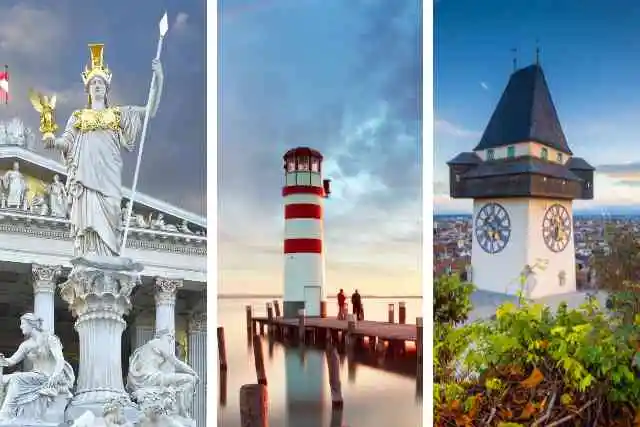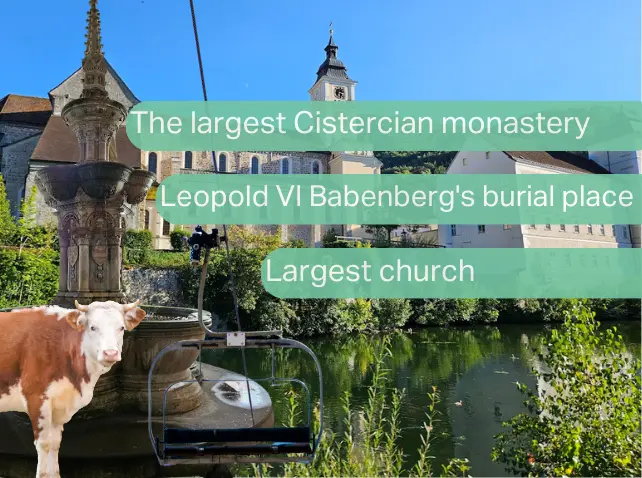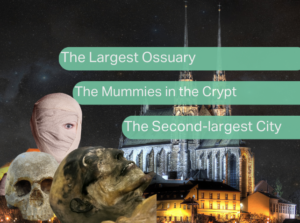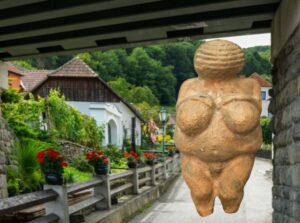From its ancient roots dating back to prehistoric times to the majestic Lilienfeld Monastery, the largest medieval Cistercian monastery in Central Europe, this charming destination offers a unique blend of culture, spirituality, and breathtaking landscapes. Whether you’re walking the historic Via Sacra pilgrimage route or exploring the lush green forests, Lilienfeld invites you to step back in time and experience the magic of Austria’s hidden treasures.
A Hidden Gem in Lower Austria

Book
Austria by Public Transport
Discover Austria like never before with “Austria by Public Transport.” This book is your ultimate guide to exploring the beauty of Austria easily and affordably. Get your copy today and start your adventure!
Lilienfeld is a small town with a population of just 2,600 residents, located in Lower Austria. Because of its small size, it holds the unique title of being the least populated district capital in Austria, which adds to its charm. Nestled among picturesque hills and bordered by a river, the town offers a peaceful and scenic environment. Each year, about 1,500 tourists stay overnight in the charming town of Lilienfeld, drawn by its tranquil setting and natural beauty.
Situated at the foot of the Alps, in the Mostviertel region, Lilienfeld lies in the Traisen Valley, offering stunning views of the surrounding landscape. The area is covered by beautiful, dense forests, which make up nearly 80% of the municipality, providing a rich natural environment. Because of its lush greenery, some locals refer to Lilienfeld as the “green lungs of Austria,” highlighting its vital role in preserving the region’s natural beauty. The most famous landmark in Lilienfeld is the monastery, which has stood here since 1202 and is inhabited by Cistercian monks, adding historical and cultural significance to the town.
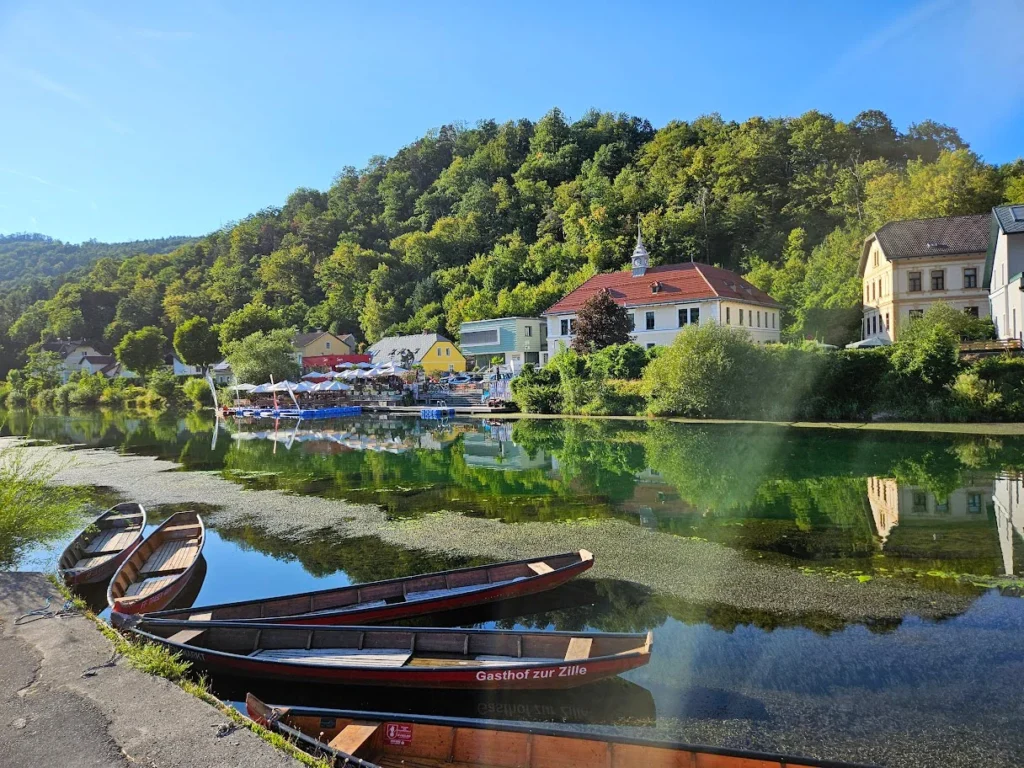
Today, this monastery is not only the largest medieval monastic complex in Austria but also in Central Europe. Historically, the monks were involved in clearing forests, and now the Lilienfeld Monastery is the second-largest ecclesiastical forest owner in Austria, with forest areas comparable in size to the city of Graz.
Support
Each post on our site takes 10 to 20 hours to prepare, and we’re a small, independent project. We really need your support to keep things going! Your help means everything to us. Please consider supporting us, so we can keep bringing you awesome content.
Thanks for being awesome!
What is Mostviertel?
Mostviertel refers to an old division of Austria. Although it is no longer legally used. It still describes the geographical regions of Lower Austria, based on its historical division. Lower Austria is divided into four quarters: Waldviertel, Mostviertel, Industrieviertel, and Weinviertel. The Mostviertel region is characterized by landscapes that transition from hills to mountains, and it is largely an agricultural area.
History of Lilienfeld
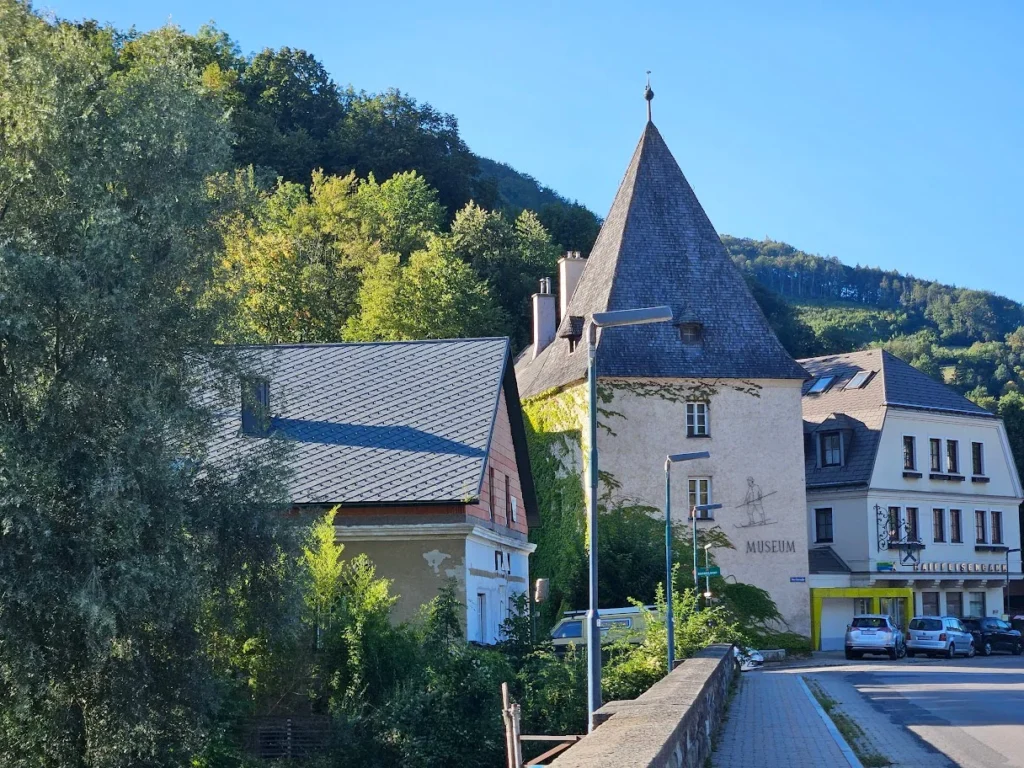
Lilienfeld has been inhabited since prehistoric times, showing a long history of settlement. Additionally, people from the Stone Age and Celts from the Bronze Age left numerous artifacts here, which are still being unearthed by archaeologists, revealing more about the area’s ancient past. In 140 AD, an iron and salt transport route passed through the area, highlighting its importance in trade. Several centuries later, around 600 AD, the lands were incorporated into the Mongolian Avars’ territory, with Slavs settling under their rule, further shaping the region’s history. It was not until 797 AD that Pepin, son of Charlemagne, incorporated the land into the Frankish territories, marking another significant change in its governance.
By the 10th century, the area was already considered part of “Ostarrichi,” under the rule of the Babenbergs, with Margrave Leopold I. In 1202, Leopold VI founded the monastery, attracting artists, builders, and painters to the area. Leopold VI wanted to build a tall and large church, which is now the largest church in Lower Austria. The monastery was inhabited by Cistercians from Heiligenkreuz Abbey.
The Turkish invasions in the 17th century devastated the surrounding villages and towns, but the monastery itself became a center of resistance and defense. During World War I, almost all the men were conscripted into the military. World War II also left its mark, with many buildings destroyed during the fighting.
Who was Leopold I?
Leopold I (around 940; † July 10, 994) is considered the first historical ruler of Austria and the founder of the Babenberg dynasty. He is recognized as one of the most important historical figures in Austria.

Subscribe
Explore Vienna like a local and discover nearby treasures.
Join our mailing list!
The Name “Lilienfeld”

The name “Lilienfeld” comes from two different sources, which can be confusing. The first theory suggests that the name derives from “Feuerlilie,” meaning fire lily, a flower that grows in the area. These lilies grow in the fields, which could explain the name Lilienfeld.
The second theory, provided by the historical lexicon of Lower Austrian towns, suggests that the name might come from “Lielenvelden” or “Lienvelt,” as mentioned in documents from the time of the monastery’s founding. Furthermore, these old German words “liele” or “liene” mean honeysuckle, a plant that grows in the forest, adding another layer of meaning. Therefore, the name might be related to a plant in the forest rather than a lily in the field, offering a different perspective on the origin of the name.
Different theories exist, but most people associate the name Lilienfeld with the fire lily, providing a simpler and more popular explanation.
The Lilienfeld Monastery

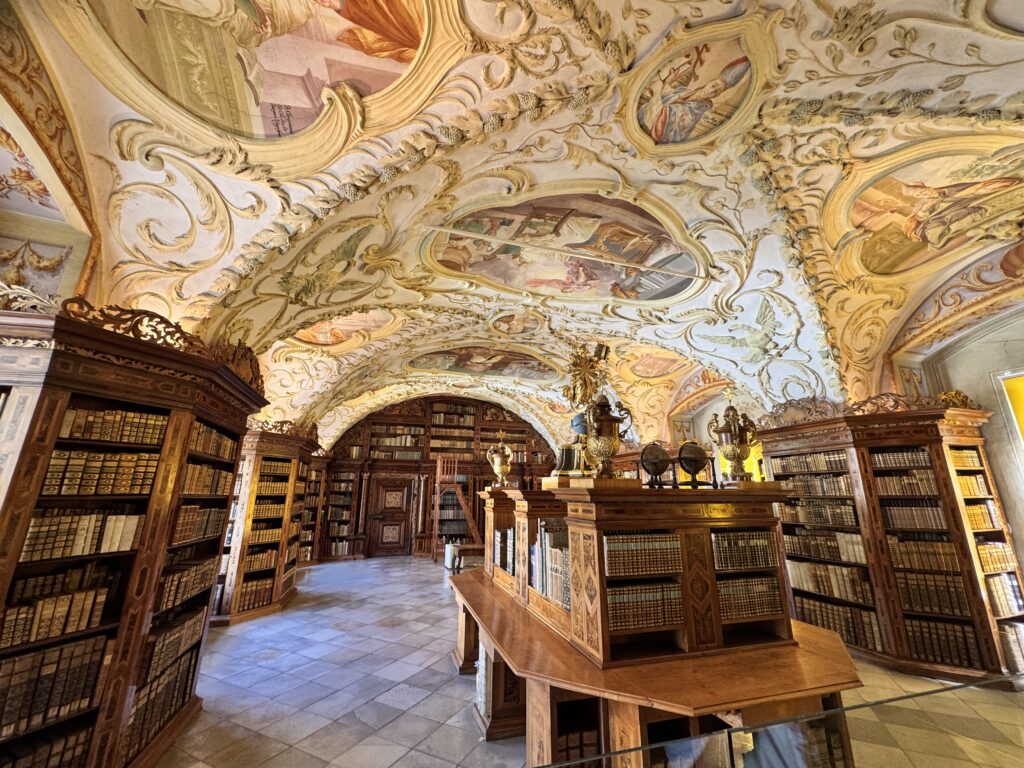
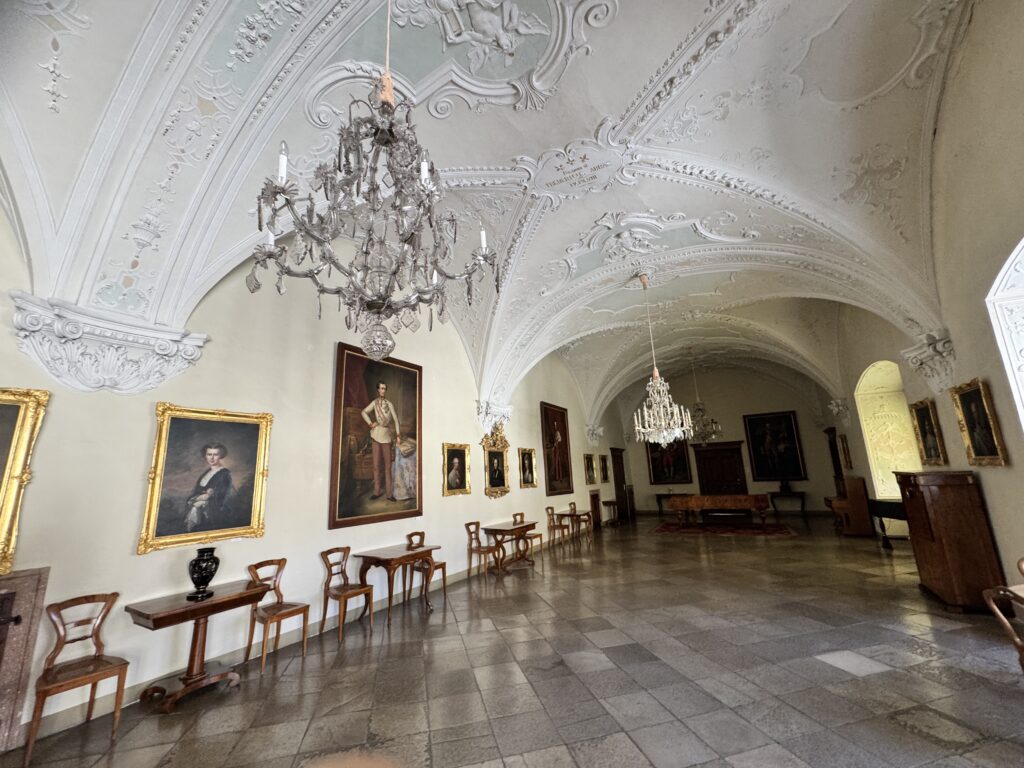
The magical and charming monastery has stood in the town for 800 years, serving as a landmark of historical importance. Additionally, it ranks as the largest medieval Cistercian monastery not only in Austria but also in all of Central Europe, showcasing its impressive scale. Leopold VI founded and endowed the monastery in 1202, and Cistercians from Heiligenkreuz inhabited it, adding to its spiritual heritage. The church basilica, built in 1263, stands as the largest church in Lower Austria and one of the largest in all of Austria, measuring over 80 meters in length. Moreover, this church serves as the resting place of Leopold VI, the monastery’s founder, and his daughter, Queen Margaret, highlighting its significance as a historical and religious site.
The monastery’s cloister is worth noting because it is the largest cloister in all of Austria. Located on the Via Sacra pilgrimage route to Mariazell, the monastery attracts pilgrims who visit to venerate the relic of the Holy Cross on the main altar. Leopold VI donated this relic in 1219, adding to the monastery’s historical and spiritual significance.
Turkish Invasion
In 1683, during the Turkish invasions, the monastery served as a refuge for the local population. The monks provided food and even trained refugees in defense. Some of the population, due to their involvement in hunting, owned various types of weapons. The Turkish forces, lacking siege weapons in the monastery’s vicinity, aimed at raiding and looting rather than engaging in heavy combat. Thanks to its fortifications and a few skirmishes, the monastery was not captured.
Up to Now
During World War II, the NSDAP used some of the monastery’s buildings as party headquarters. Moreover, an interesting fact about Leopold VI is that he made a claim to Cyprus because his mother had a connection to the last ruler of Cyprus before its conquest by Richard the Lionheart. However, Leopold failed to obtain Cyprus because Richard sold it to a French nobleman. Today, the monastery is home to and serves 18 Cistercians, and it continues to be a place of historical significance.
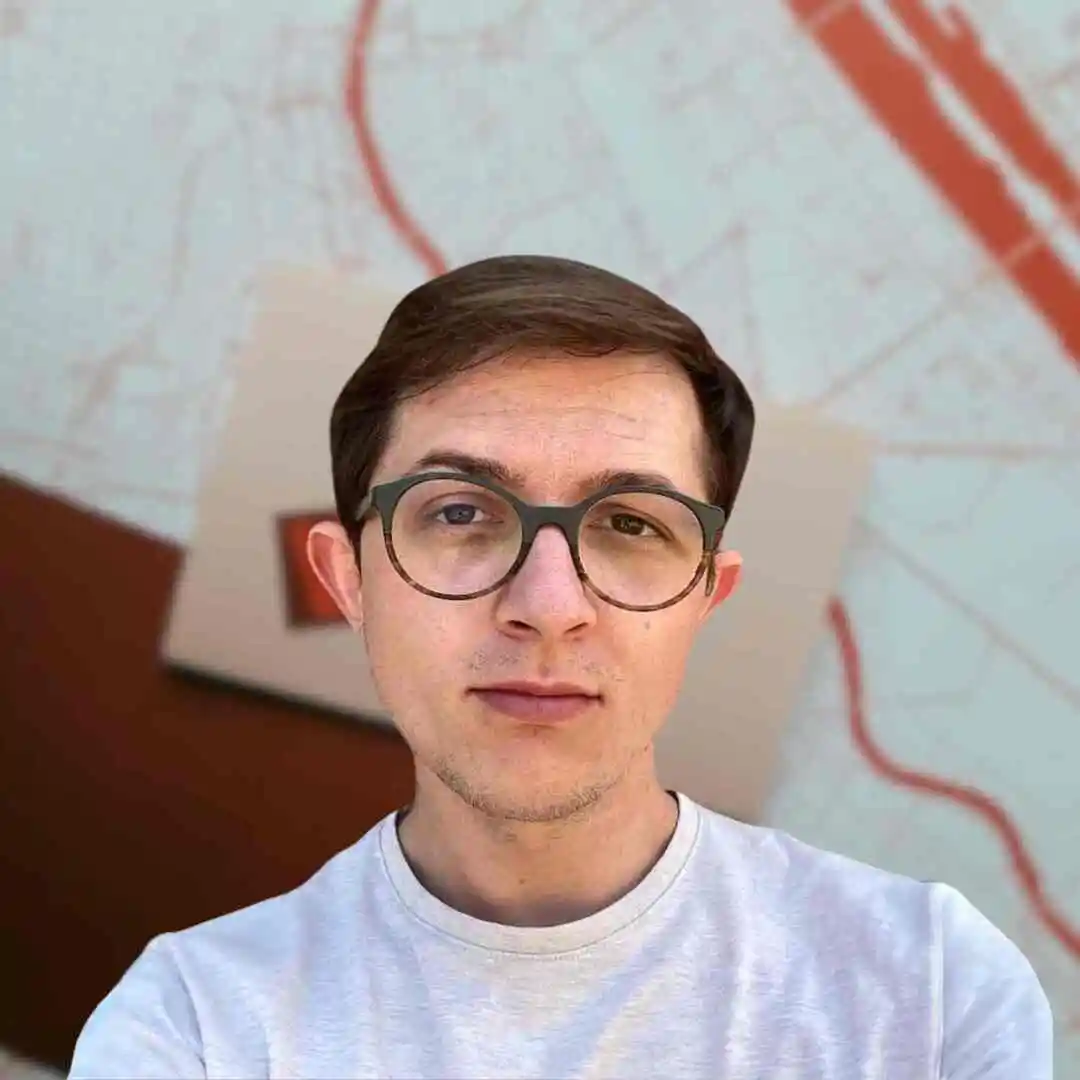
Kordian
Hey, it’s me, Kordian! I spend like 10 to 20 hours on each post just for you. This website is my main source of income. If you enjoy using it regularly, I’d totally appreciate your financial support. Your help means a lot and keeps the content coming. Thanks a bunch!
What is Via Sacra?
Via Sacra is a pilgrimage route that has led people from Vienna to Mariazell. It’s the only national shrine in German-speaking countries, for over 800 years.
Lilienfeld Chairlift
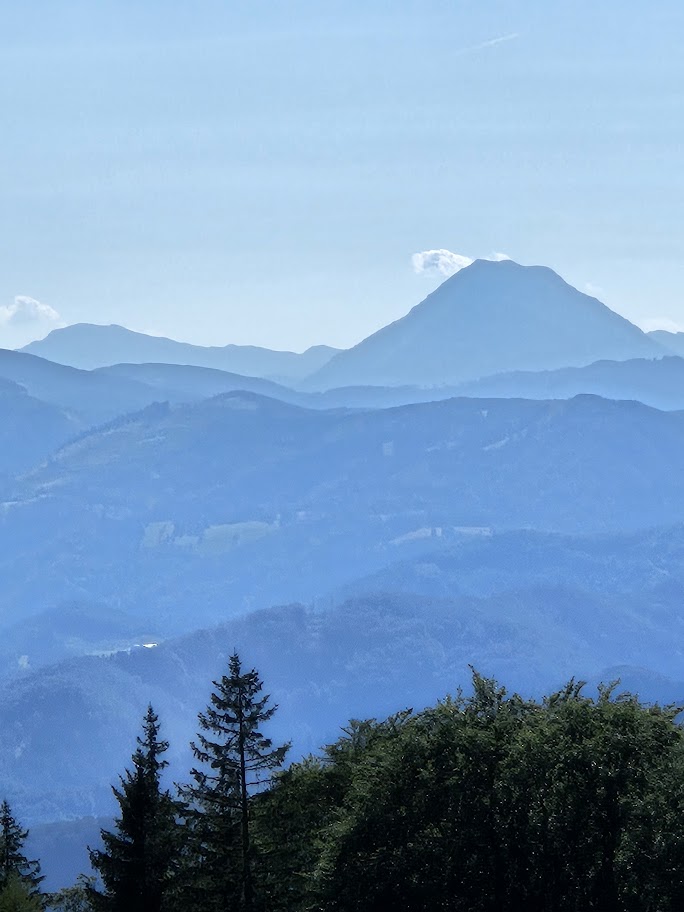
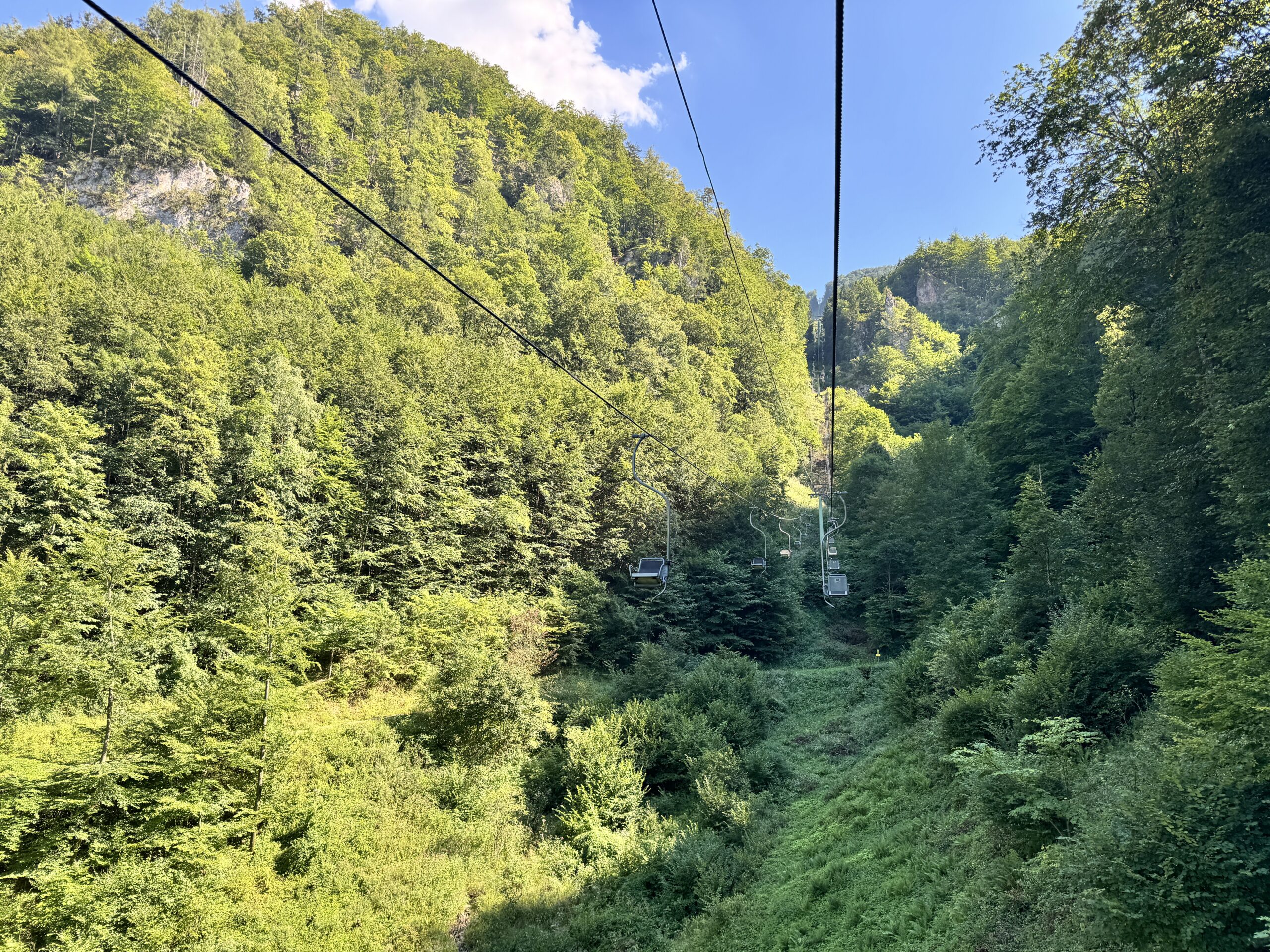

It is worth taking the chairlift up to Muckenkogel, the only chairlift in Lower Austria, for a memorable experience. At an altitude of 1,248 meters, you can enjoy a stunning panoramic view of the region. This breathtaking view makes the trip well worth it. With a Niederösterreich card, you can ride up and down at no extra cost, adding more value to your visit. Hiking down is perfect . You can choose a trail with waterfalls, alpine meadows with cows, and distant mountains. This path offers a serene and picturesque descent.
Mathias Zdarsky
Mathias Zdarsky is widely regarded as one of the pioneers of European skiing. Although originally from the Czech Republic, he eventually settled in Lilienfeld. At that time, he ordered skis from Norway, which he observed were not necessarily suitable for high mountain skiing. Consequently, Zdarsky improved the bindings and, moreover, developed a new technique for alpine skiing. In 1905, he organized the first giant slalom on Muckenkogel in Lilienfeld. Notably, the Giant Slalom remains a staple discipline in the Alpine Skiing World Cup to this day.
Join Our Vibrant Community
Are you passionate about discovering the hidden gems of Vienna and its surroundings? Follow us on social media and become part of our enthusiastic community!
Why Follow Us?
- Exclusive Content: Each post is a labor of love, taking between 10-30 hours to create. We share breathtaking photos, captivating stories, and invaluable tips.
- Stay Updated: Never miss out on exciting events, new attractions, and must-visit spots in and around Vienna.
- Support Independent Projects: We are an independent project, and your follows help us cover the costs of running this page. Your support is crucial!
Your Support Matters!
Every follow, like, and share directly supports our work. It helps us continue bringing you the best content and ensures we can keep this site running. By following us, you’re not just staying informed – you’re helping us grow and thrive.
Don’t miss out! Click the links above and start following us today. We can’t wait to connect with you!

